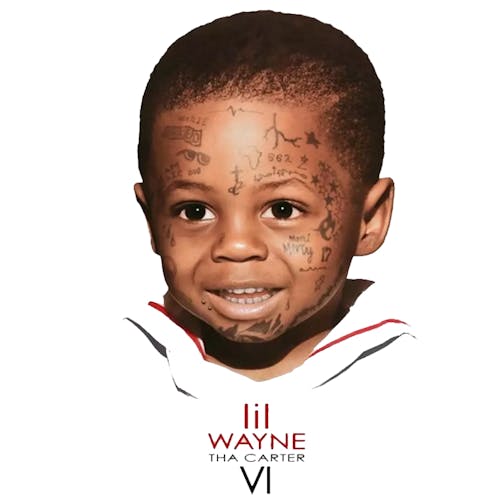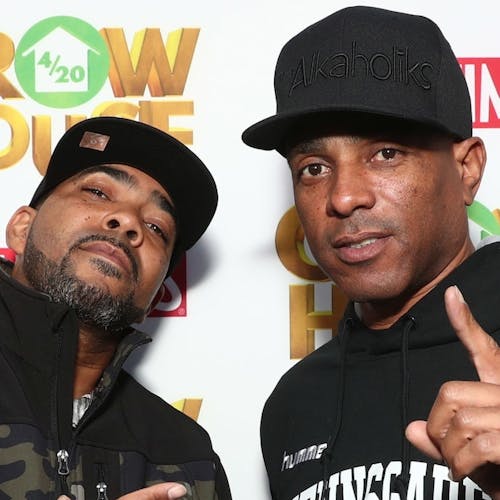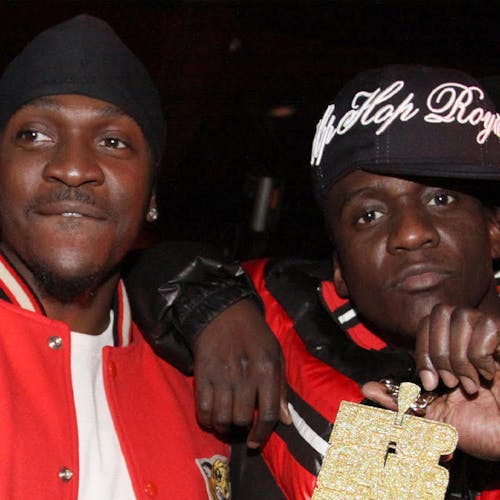
MCs and lyricists love to wax poetic about DJs. They get the party started, they make us slaves to the rhythm, they keep us dancing, they save our lives, they — in the words of Eric B. & Rakim — “move the crowd,” and they somehow just know how to send us sailing off into the night. But what do we really know about the artists behind the “wheels of steel?” And do we even speak their language?
What better authority to talk about the subject than Z-Trip, an internationally recognized DJ and producer, winner of America’s Best DJ Award, and performer alongside LL COOL J for the past decade. He’s rocked crowds at festivals, worked with Rakim, Public Enemy, Beastie Boys, and Lee Scratch Perry, and most recently uplifted spirits during the global pandemic on Electric Daisy Carnival’s Virtual Rave-A-Thon.
Check out how Z-Trip cuts up some of the DJ lexicon in his own words.
An Incomplete DJ Dictionary From Z to B by DJ Z-Trip (as told to Shawna Kenney)
Z-Trip
My name is Zach, and in high school I was trying to figure out different DJ names. I wanted something flashy and cool, and a friend of mine was like, “Dude, you’re such a trip. I’m going to call you Z-Trip.” And that was it. I was like, “Yeah, cool dude, whatever.” He threw it on the flyer and I was like, “Oh, that’s funny.” And then everyone’s like, “Hey, Z-Trip.” It stuck. It morphed into him being correct because I like to think because of what and how I play, I tell stories and take people on a journey.
turntablist
The word came from DJ Babu from the Beat Junkies crew. He created a term to basically make people understand that it’s not just playing records on the turntable like a traditional DJ. I’m actually manipulating these sounds, and I’m doing something with it. It elevates the form. You know, a guitarist, a pianist, cellist, there are certain people who have elevated the craft of the instrument. Now it’s “I’m a turntablist.”
transform
There’s a specific sound made by dragging the record really slow and using a switch to turn the sound on and off. If done correctly, it emulates the sound of a Transformer, like the cartoons of the ’80s. When it transformed from car to robot to truck or whatever, it was a certain sound. The first two people to really popularize this were Grand Master Flash and Jazzy Jeff.
trading 8s
This is like going record for record but with scratching. You go eight bars of a record. It’s a wide-open beat with no bass lines or anything, just drum breaks. This highlights the person’s scratching with no confusion going on. So that person will do eight bars of a scratch, then pass it to the next person, and they’ll do eight bars of a scratch, then they pass it back. It has the competitive aspect of the b-boy stance but the improv element of jazz. You’re trying to throw your best moves in eight bars. It’s also called “going for eights.”
scribbling
Scratching is the umbrella term. Scribbling, chirping, baby chirps, doing a flair, doing an orbit, they’re all scratching techniques.
scratching
The art of manipulating the record and the crossfader to create your own sounds via the original sound, based off the original sound. How to manipulate it by speed and combinations of movement of the record and combinations of the crossfader. There’s infinite combinations. How to take a sound that is meant to be played forward and by the act of moving that record and that sound backwards and forwards and using the crossfader is the art of scratching.
record for record
When you’re mixing with somebody and guys are going back and forth with mixes. It’s like, “I’ll play one, then you play one,” and the cool thing is you get to mix off the other person. You don’t know what they’re going to throw at you so it ups your game. You try and give somebody the hardest thing. We used to do this joke where you’d mix records, and then I would put on like a prog rock song of someone like Yes or something that’s in a weird time signature or with a weird ethereal breakdown in the middle, just to throw whoever off the loop, off the path like, “Oh, try and mix out of that. Good luck.”
phase
This is a new technology that has revolutionized the way we deal with tracking issues in DJing. You don’t have to use the needle on the tone arm anymore. Before, there was always the issue where if somebody bumped the turntables, it would bump the needle and it would fuck things up, like it would skip and you would screw it up.
Then there came the ability to interject Serato, so you were off of vinyl. You went from vinyl to digital. Serato allowed you not to worry about tracking so much if it bumped the needle. The needle would technically still track to the same part of the record. It would compensate for the bump or the hiccup so it would track better. But still, you’d run into these situations where, if the bass was too heavy, there’s certain settings in Serato that would make it sort of garble the sound a little bit and make it sort of inaudible.
Phase is a wireless controller that lets you control tracks playing from a DJ software without needing turntable needles or timecode control vinyl. Two audio remotes capture the turntable rotation information and wirelessly transmit it to a receiver that processes and sends it to your DVS setup.
For instance, if I’m up on stage with LL and the bass is too heavy or there’s too much wind, I’m not worrying about it because it doesn’t disturb my tracking and everything is good to go.
mash-up
It’s funny because I am associated with the term “mash-up,” which is OK. However, when we get to the root of what it means, it’s a style of mixing where you would take two things that don’t normally work and blend them together, like a rock cappella and a Hip-Hop beat from something else or two genres that don’t normally live together. Or two pieces of music that, in theory, would never speak to each other or never be included in the same thing, and you layer them together and you create a new work. Me and all the DJs that I came up listening to, we just called it blending.
It’s kind of like how there are issues when calling people breakdancers. They were adamant about the word “breaking.” A similar thing happened with us doing blends. People all of a sudden said “It’s a mash-up.” It’s a media term but also a reggae term like, “Mash-up this, mash-up the place.” I never heard that anywhere other than Jamaica, at first.
looping
The act of taking the drum break and repeating it over and over.
loop
Once you find a drum break that you are into, if you’re a producer or a DJ who wanted to produce or make your own thing and you wanted to use that break, you would take that drum break and put it into your sampler and chop it. You’d break it up and make sure you chopped it right at the beginning and the right ending point so it would loop correctly on beat. Technically a loop would be that, the perfect size loop that could go and repeat.
juggling
The act of going back and forth between the loop (see also: beat juggling).
hamster
If you DJ normal, then you just DJ with, let’s say, your record that’s on the right. When you play it, your crossfader would be all the way to the right side. Songs on the left side, your crossfader is all the way to the left side.
When I first started, I didn’t recognize that to be the best way for it to be set up. And I didn’t realize, in plugging in my equipment, that that was the standard way, because if you were to have your record on the right side and your fader is all the way to the right side, I thought when you’re scratching, both hands should be both going away from me at the same time. “Ah!” And then pull back, “Ah!” And then you pull back. So when I set up my mixer, I had my crossfader reversed. So when my crossfader was all the way to the right, it was quiet. When I pushed the crossfader out and I pushed the record out, the sound came out. It felt intuitive.
When I started DJing parties, I encountered other DJs who were like “Why is your shit set up backwards?” and I’d say “No, your shit’s set up backwards.” So they would have to physically unplug the phono, the turntable lines from the mixer, and plug them back into their respective places. Then when I came up I would have to unplug them and plug them back in to opposite channels. In the meantime this is creating dead air.
I had to come up with something, so a buddy designed a box for me that you could plug the turntables into, then you ran a switchbox that took and spit out cables to run into the mixer, so you interjected a little switch. It would reverse the polarity of the switches so it could change your crossfader to go from left to right. We called it “the hamster switch.”
The term “hamster” came from a group out of San Francisco called the Bulletproof Scratch Hamsters. DJ Quest DJ’d with his set-up reversed like I did, so we started going “Oh you scratch hamster? I scratch hamster, too.” He popularized the term “scratching hamster.” It was derived from us playing that way.
hamster switch
As “hamster” became known as a style and we DJs started being able to create mixers, companies like Vestax and Gemini were approaching us to create our own mixers, because we had special needs in our mixers. Finally, someone was able to put in a switch that reversed the polarity, and that became known as the hamster switch in the mixer.
It’s like back in the day when Jimi Hendrix had to turn his guitar upside down and restring it to play left-handed because the way it was didn’t work for him. The hamster switch innovation is a crucial component for me. So sometimes when DJs play back to back, all I’ve got to do is click a switch and I’m ready to go. It allows us to communicate. It’s like a language translator.
DJ or deejay
I prefer just the letters D and J, because it’s assumed that’s what it stands for: disc jockey.
dead air
When there’s no music happening and you’re killing a party.
break or the breaks
Most songs are set up in structure where you have an intro, a chorus, the first verse, a second chorus, the second verse, then the bridge that gives the song a break from the pattern. Then you come back to another verse and maybe a double chorus, and then it finishes. There’s no one correct way of doing this, since all songs have different structures to them, however a lot of songs have these same properties. For most songs, there’s a chorus. There’s always a hook that people can come back to.
Normally there’s a break in the song where maybe the melody stopped for a second or it was in the bridge, where you’d have the ability to do a turnaround or some sort of refresh of the main chunk of the song, so you would use a bridge or a break. As DJs, we’re always looking for drums. We’re a drum-driven culture, so anytime you’d have the intro of a song that would have a drum break in it before the melody or the bass line or any sort of music would come in, that would usually happen at the top of the song, and usually it would happen somewhere in the middle if it was a recurring theme or if the song had room to breathe.
Now that can also be the break where it’s just the break of the vocals, because sometimes the drums and the bass line are exactly what you want, and that’s the break. In theory, it was always about the drum break, and you call it the break in the song because it’s where everything quiets down and the drums are able to get loose. Sometimes I’ll be like, “Let’s give the drummer some.” Like James Brown says, “OK, we’re going to lay out and let the drummer get some now. 1-2-3, hit it,” and then the drummer would go and you’d get that drum break.
Once you found a song that had a great break, you would always have to go out and find a second copy of that song so you could extend the break. Basically, you cut out all the meat of the song and go right in for the drum break. That’s what DJs would do, going back and forth between the same record, extending that four-bar break or that two-bar break or whatever so it could turn into three minutes of you scratching and mixing over the drum break. Usually that was meant for the b-boys to break. When they were breaking, they had something that was the funkiest part or the most wide-open part. It’s kind of like having a fresh white piece of paper for you to draw on versus trying to draw in something that’s completely cluttered with images already.
bite
That’s a universal sort of Hip-Hop term that goes along with anything — graffiti, breaking, etc. To bite somebody is to take their move or their sound, something that they’ve popularized, and do it verbatim and pass it off as if it’s your own. There are subtle ways of doing that where you could do it and those who know, know that you bit that other person’s thing. The idea, though, is to always improve upon the next person’s move. So I could take something that somebody created, in my woodshed, in my workshop, I could bite it, manipulate it, figure it out, and then try to figure out a way to enhance it or add to it so when I play it, someone would recognize it as, “Oh, he’s biting that person, although you can see that he’s biting it and doing something new to it.”
We all learn by emulation. Technically we’re all biting what was done before us. Everything that we were doing is homage to Grand Wizard Theodore, who is the inventor of the scratch, and to anybody else like Grand Master Flash and all the pioneers. The question is, “How do I improve upon that?”
beat juggling
This is a bit more in-depth than juggling. You’re taking the drum break, once you’ve got the motion of looping, going back and forth, sometimes break[ing] the beat down a bit with hand motions. They’ll slow the beat down with the pauses, touching the vinyl and entering their own time signature by slowing the beat down or bringing the beat back and only repeating maybe the kick snare combo of the drum break at one point. Say the drum break is four bars. Then on the first and second bar you might do something to it to change up the drum pattern. So beat juggling is the art of re-conceptualizing the drum beat via your hands and making your own new drum pattern with it.
* Banner Image: DJ Z-Trip / Steve Dykes Photography



